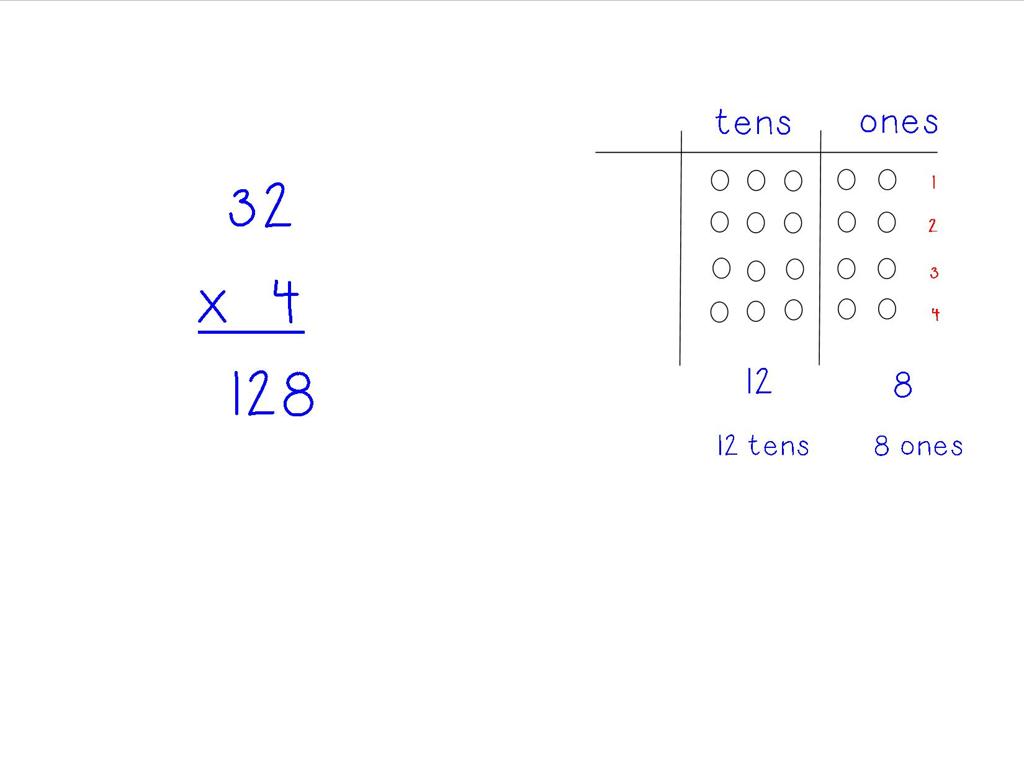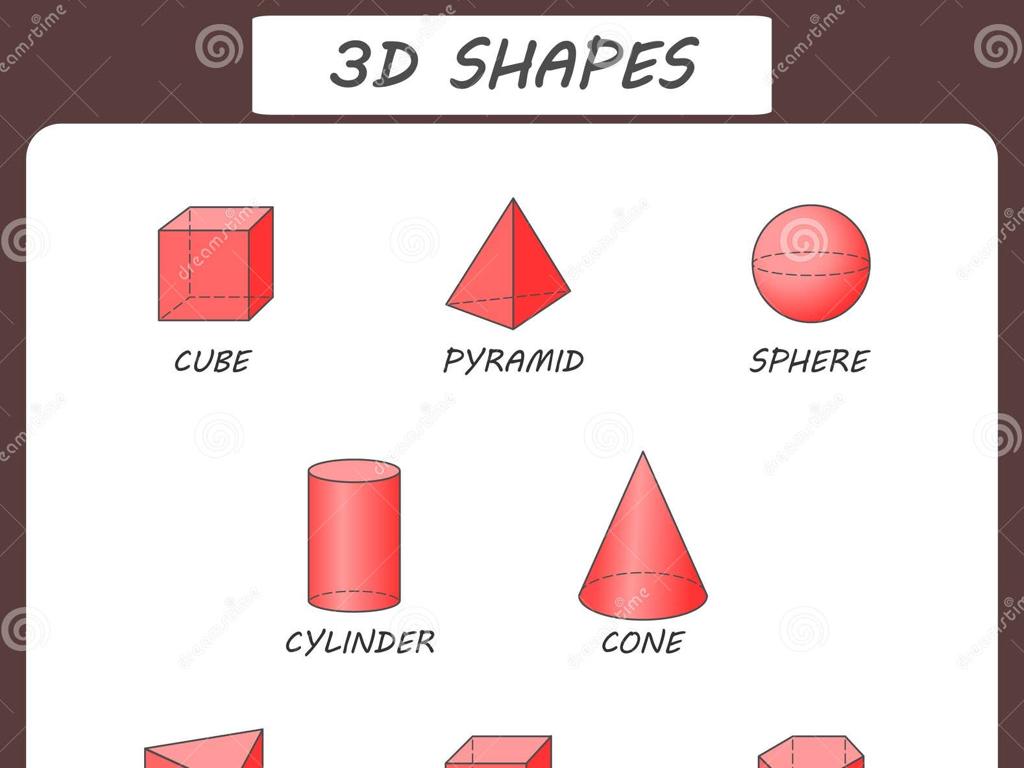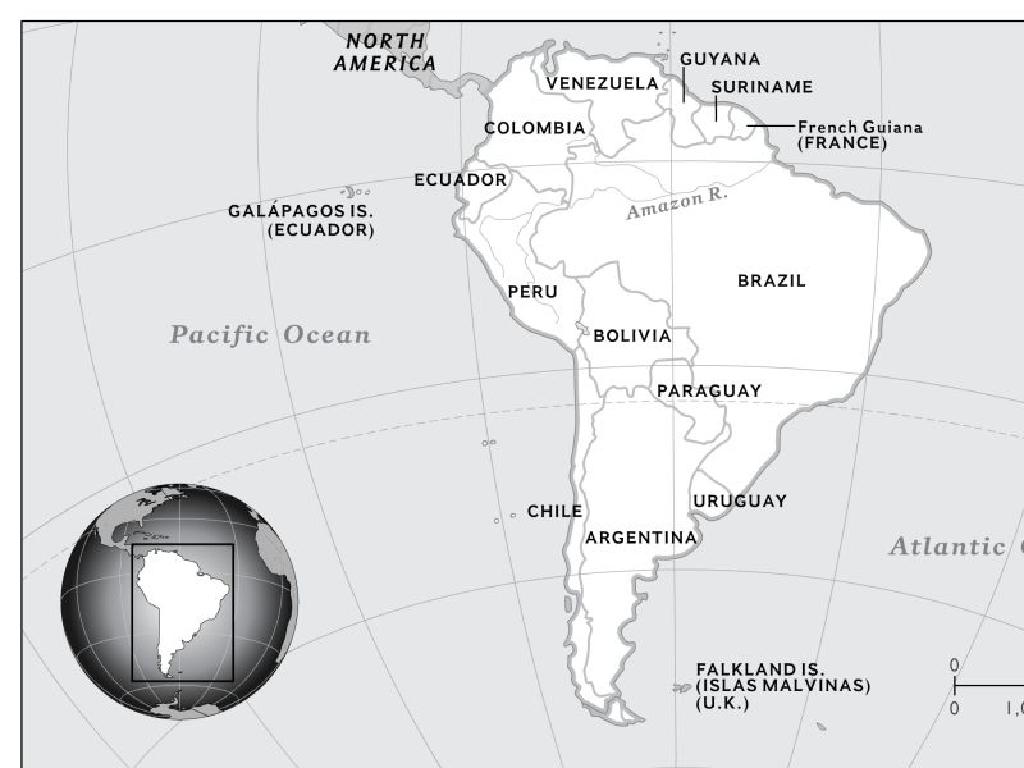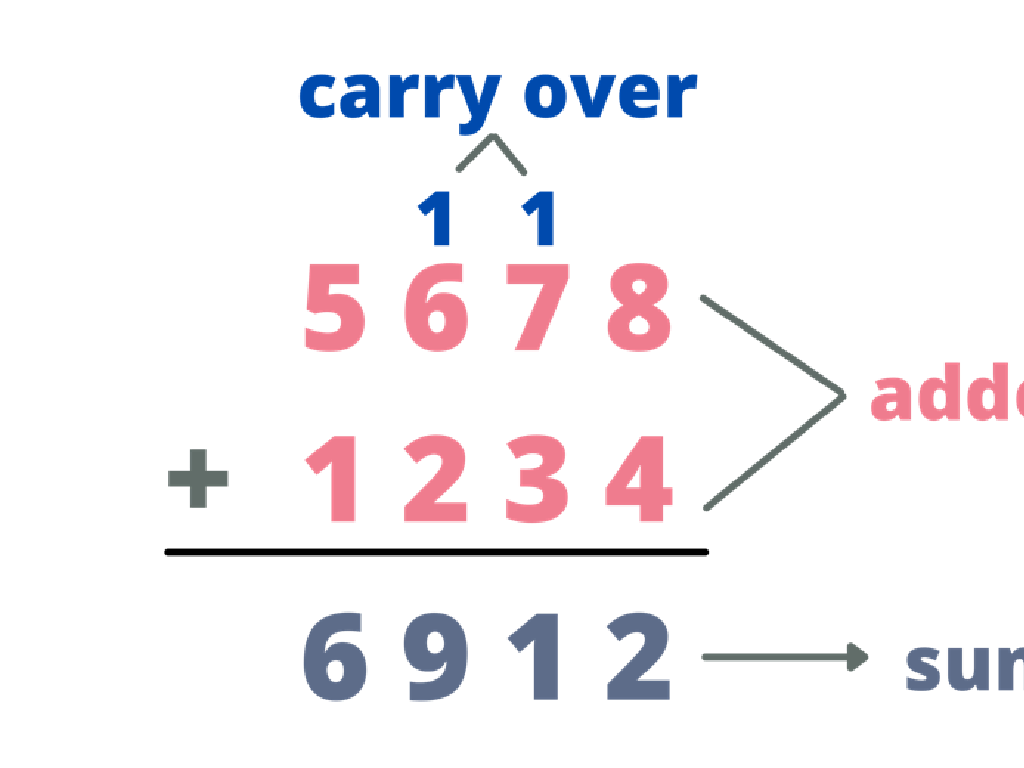Semicircles: Calculate Area, Perimeter, Radius, And Diameter
Subject: Math
Grade: Seventh grade
Topic: Perimeter And Area
Please LOG IN to download the presentation. Access is available to registered users only.
View More Content
Exploring Semicircles
– What is a semicircle?
– Half of a circle, formed by cutting a whole circle along the diameter
– Semicircles vs. full circles
– Unlike a circle, a semicircle has a straight edge along the diameter
– Semicircle properties
– Key properties include radius, diameter, area, and perimeter
– Semicircles in the real world
– Examples: domes, protractors, and arches in architecture
|
Introduce the concept of a semicircle by explaining it as half of a circle, cut along the diameter. Highlight the differences between a semicircle and a full circle, particularly the straight edge of the semicircle. Discuss the properties of a semicircle, including how to calculate the radius, diameter, area, and perimeter. Provide real-life examples to help students visualize semicircles in the world around them, such as the shape of a dome, the design of a protractor, or arches in bridges and buildings. This will help students understand the practical applications of the mathematical concepts they are learning.
Understanding the Circle
– Define a circle
– A round plane figure with every point equidistant from the center
– Circle’s key components
– Center: circle’s middle point, Radius: line from center to edge, Diameter: line across circle through center
– Circumference explained
– Circumference: total distance around the circle, also known as the perimeter
– Relation to semicircles
– Semicircle is half a circle; understanding a circle helps calculate semicircle properties
|
This slide introduces students to the fundamental concepts of a circle, which is crucial for understanding semicircles. Start by defining a circle and discussing its symmetry and round shape. Highlight the key components such as the center, radius, and diameter, ensuring students can identify and measure these in a diagram. Explain that the circumference is similar to the perimeter of a polygon, as it measures the distance around the circle. Emphasize that these concepts are directly applicable to semicircles, which are simply half of a circle, and that understanding the full circle is essential for calculating the area, perimeter, radius, and diameter of a semicircle.
From Circles to Semicircles
– Definition of a semicircle
– A semicircle is half of a circle, divided along the diameter.
– Cutting a circle into a semicircle
– Fold a circle in half and cut along the fold to create a semicircle.
– Properties of semicircles
– Semicircles have a straight edge (diameter) and a curved edge (arc).
– Calculating area and perimeter
– Use formulas: Area = (Àr²)/2, Perimeter = Àr + d.
|
Introduce the concept of a semicircle by explaining it as half of a circle, split along the diameter. Demonstrate how to create a semicircle by folding a circular paper in half and cutting along the fold. Discuss the properties of a semicircle, including its straight edge (diameter) and curved edge (arc). Teach students the formulas for calculating the area and perimeter of a semicircle. Area is half the area of a full circle, and the perimeter includes the diameter plus the length of the arc. Provide examples and practice problems to help students apply these concepts.
Calculating the Perimeter of a Semicircle
– Perimeter formula: Àr + 2r
– Example with a radius of 4 cm
– For r=4 cm, Perimeter = À(4) + 2(4) = 12.57 + 8 = 20.57 cm
– Practice Problem: Find the perimeter
– Use the formula with a different radius value
|
This slide is focused on teaching students how to calculate the perimeter of a semicircle using the formula Perimeter = Àr + 2r, where r is the radius of the semicircle. Start by explaining the formula, where Àr is the length of the curved part of the semicircle and 2r is the diameter of the straight part. Provide an example with a specific radius, such as 4 cm, to show how to apply the formula. Then, give students a practice problem to solve on their own, using a different radius value. This will help them understand the concept and how to apply the formula. Make sure to walk around the classroom to assist students who may need help during the practice problem.
Calculating the Area of a Semicircle
– Area formula for a semicircle
– Area = (Àr²)/2, where r is the radius
– Example with a given radius
– If r = 4 cm, Area = (À * 4²)/2 = (À * 16)/2 = 8À cm²
– Practice problem for students
– Find the area if the radius is 7 cm
|
This slide introduces the formula for calculating the area of a semicircle, which is half the area of a full circle. Start by explaining the formula and the mathematical constant À (pi). Use an example with a specific radius to show how to apply the formula. Then, provide a practice problem for the students to solve on their own, reinforcing their understanding of the concept. Encourage students to remember that the radius is half the diameter, which can help them solve problems where the diameter is given instead. Make sure to go over the practice problem in the next class to ensure comprehension.
Radius and Diameter Relationships
– Radius is half of diameter
– Diameter is twice the radius
– Convert radius to diameter
– If radius (r) is 4 cm, diameter (d) is 4 cm * 2 = 8 cm
– Solve a practice problem
– Given d = 10 cm, find the radius
|
This slide focuses on the fundamental relationship between the radius and diameter of a circle, which is crucial for understanding semicircles. The radius is always half the length of the diameter, and conversely, the diameter is twice the length of the radius. Provide a clear example of how to convert from one to the other. For the practice problem, guide students to apply this knowledge: if the diameter of a circle is given as 10 cm, they should be able to find that the radius is 5 cm. Encourage students to solve this problem on their own and then discuss the solution as a class.
Class Activity: Crafting Semicircles
– Gather materials: paper, scissors, string, ruler
– Follow instructions to create a semicircle
– Measure radius and diameter of your semicircle
Use the ruler for straight lines and string for the curved edge.
– Calculate perimeter and area
Use formulas: Perimeter = Àr + 2r, Area = (Àr^2)/2
|
This hands-on activity is designed to help students understand the properties of semicircles by creating one themselves. Provide each student with paper, scissors, string, and a ruler. Guide them through the process of folding the paper to find the center, using the string to draw the semicircle, and then cutting it out. Once they have their paper semicircle, instruct them to measure the radius and diameter, ensuring they understand the relationship between the two. Next, they will apply the formulas for the perimeter (half of the circumference plus the diameter) and the area (half of the area of a circle) to their measurements. Encourage students to compare their calculated values with their actual measurements. Possible variations of the activity could include using different-sized papers, comparing semicircles of different radii, or even exploring the properties of quarter-circles.
Review: Semicircle Properties & Formulas
– Recap semicircle properties
– A semicircle is half of a circle, with properties related to its radius.
– Formulas for area & perimeter
– Area formula: A = (Àr²)/2, Perimeter formula: P = Àr + 2r
– Understanding radius & diameter
– Radius is half the diameter, which spans the widest part of the semicircle.
– Q&A session
|
Begin with a brief review of the properties of a semicircle, emphasizing its relation to a full circle. Reiterate the formulas for calculating the area (half the area of a full circle) and the perimeter (half the circumference plus the diameter). Clarify the concepts of radius and diameter, ensuring students understand the relationship between the two. Open the floor for a Q&A session, encouraging students to ask questions about any aspect of semicircles they find challenging. Be prepared to provide examples and guide students through solving problems involving these formulas.






